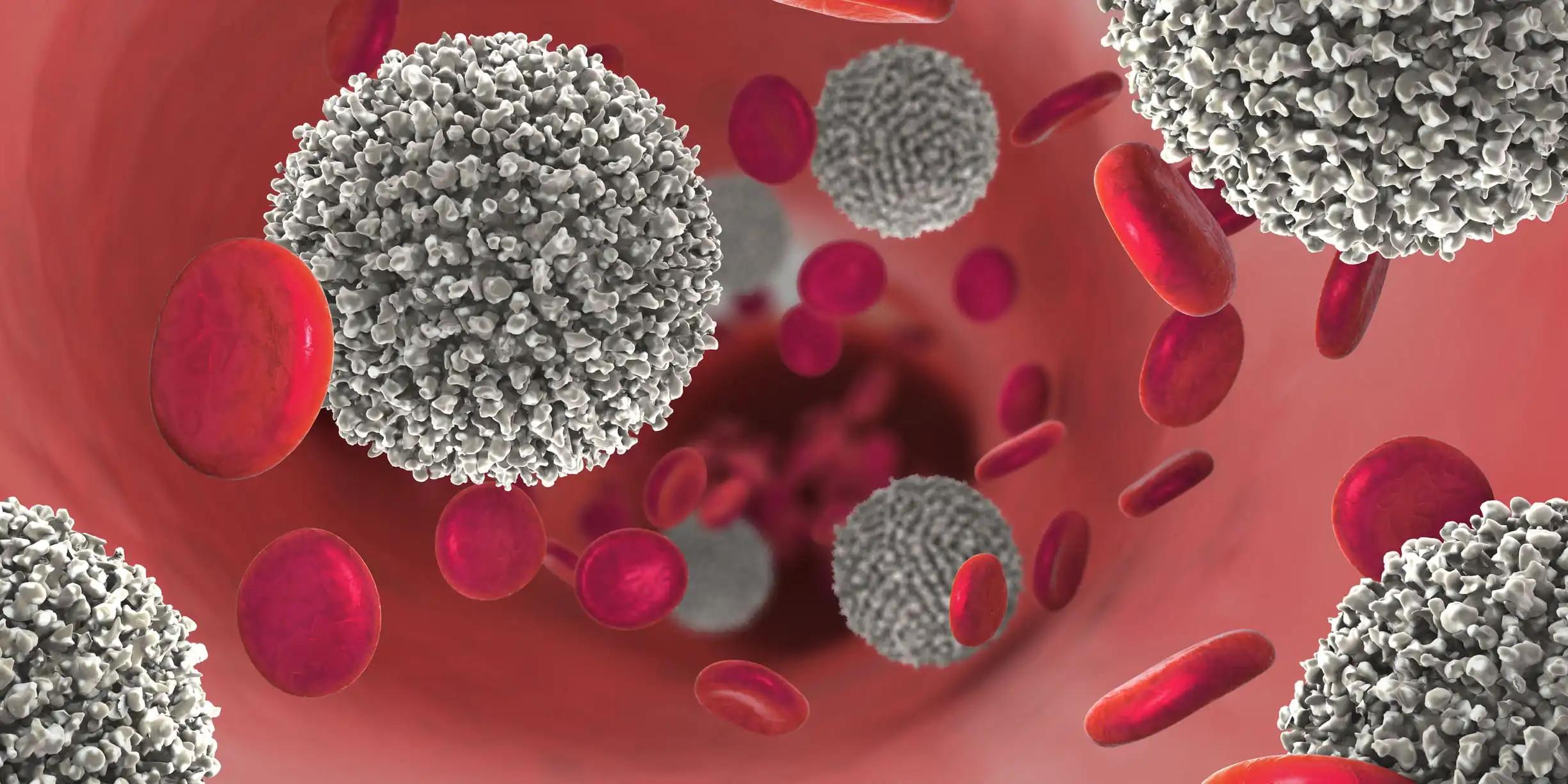KEY TAKEAWAYS
- The phase III trial aimed to evaluate the efficacy and outcomes of VMP induction followed by Rd in transplant-ineligible NDMM patients.
- The primary endpoint was to determine the MRD(-) rate at the end of induction.
- KRd and D-KRd achieved significantly higher MRD negativity compared to VMP-Rd in transplant-ineligible NDMM patients; long-term outcomes remain under investigation.
Newly diagnosed multiple myeloma(NDMM) is a hematologic malignancy identified by abnormal plasma cells in the bone marrow, causing bone destruction, anemia, and kidney dysfunction.
Certain treatments for NDMM, particularly chemotherapy and stem cell transplantation, can slightly increase the risk of developing acute myeloid leukaemia (AML). For transplant-ineligible NDMM patients, induction therapy with bortezomib-melphalan and prednisone(VMP) and lenalidomide and dexamethasone (Rd) are established treatments.
Maria-Victoria Mateos and her research group spearheaded the study, that aimed to evaluate the efficacy and outcomes of VMP induction followed by Rd in transplant-ineligible NDMM patients, focusing on fit individuals aged 65-80, with emphasis on the 47% complete response(CR) rate, 20% MRD(-) rate, median progression-free survival (PFS) of 34 months, and a 4-year overall survival(OS) rate of 70%.
The study utilized VMP9-Rd9 as the control arm; they compared it with carfilzomib, lenalidomide, and dexamethasone (KRd) or D-KRd, where induction comprised 18 cycles, followed by 4 D-Rd consolidation cycles for the first two arms(to evaluate if anti CD38 consolidation might compensate its absence as induction).
Patients were stratified by MRD status for maintenance therapy with D-R versus observation. Frailty assessment, using the Geriatric Assessment in Hematology (GAH scale), identified fit individuals as those under 80 years old with a score between 0 and 42. Standard doses were maintained for VMP and Rd. At the same time, K-based regimens involved 36mg/m2 K twice weekly during C1-2, transitioning to 56mg/m2 weekly from C3 onwards. The R was administered at the standard dose, and D was initially planned intravenously, then switched to subcutaneous administration following conventional dosage and scheduling.
The primary endpoint was to determine the MRD(-) rate (NGF 10-5) at the end of induction, aimed to compare experimental arms KRd and D-KRd with the control arm VMP-Rd. A step-down testing procedure was employed, where statistical significance in a pre-defined hierarchy influenced inference for subsequent tests. No formal adjustment for the multiplicity of contrasts was required. Secondary endpoints during the induction phase included serological responses, PFS, OS probabilities at 18 cycles, and the safety profile.
Of 540 screened patients, 78 were screening failures, and 462 were randomized into VMP-Rd (154 pts), KRd (154 pts), and D-KRd (153 pts, but one patient was not evaluable).
The baseline characteristics were comparable, with a median age of 72 and about one-third aged over 75, while nearly one-third had ISS 3, and 15% had extramedullary disease. Of the 461 evaluable patients completing 18 induction cycles (128 VMP-Rd, 122 KRd, and 119 D-KRd), the MRD(-) rate at 10-5 was 32% for VMP-Rd, 69% for KRd (p<0.0001), and 79% for D-KRd (p<0.0001). At 10-6, KRd (59%) and D-KRd (75%) had higher MRD(-) rates compared to VMP-Rd (24%) (p values <0.0001). While the ORR at the end of induction was comparable (87%, 89%, and 89%), the sCR/CR rate was higher for KRd (59%) and D-KRd (61%) versus VMP-Rd (40%) (P-values <0.0001).
At 18 months, the PFS rates were 79% for VMP-Rd and 87% for KRd and D-KRd, with only two MRD-negative patients experiencing progression. The 18-month OS rates were 91%, 95%, and 90% for VMP-Rd, KRd, and D-KRd, respectively. Early discontinuations occurred in 48 (VMP-Rd), 44 (KRd), and 40 (D-KRd) patients, primarily due to progressive disease (VMP-Rd: 23; KRd: 9;D-KRd: 6) or toxicity(VMP/Rd:8; KRd: 14; D-KRd: 6). Deaths were observed in 12 D-KRd patients infections, (COVID-19 in 3), 5 KRd patients (4 infections (COVID-19 in 1 case)), and 6 VMP-Rd patients (infections in 4 pts).
Hematological toxicity during induction revealed higher rates of G3/4 neutropenia and thrombocytopenia in VMP-Rd (50%) compared to KRd(24%) (P<0.0001 and similar rates to D-KRd(47%). The G3/4 infection rate was comparable(12% in VMP-Rd and 15%-16% in KRd and D-KRd, while cardiovascular events were higher in (11%) KRd and D-KRd (14%), with hypertension and cardiac failure being predominant (5%) (P<0.0001).
The study achieved its primary endpoint, demonstrating significantly higher MRD(-) rates with 69% KRd and 79% D-KRd compared to VMP9-Rd9 (32%). VMP-Rd exhibited higher neutropenia rates, while the D-KRd arm showed elevated infections leading to death; the study continues to assess long-term outcomes. The research was sponsored by PETHEMA Foundation.
Source: https://ash.confex.com/ash/2023/webprogram/Paper179866.html
Clinical Trial: https://clinicaltrials.gov/study/NCT03742297
Mateos MV, Paiva B, Cedena Romero MT, et al.’’209 GEM2017FIT Trial: Induction Therapy with Bortezomib-Melphalan and Prednisone (VMP) Followed By Lenalidomide and Dexamethasone (Rd) Versus Carfilzomib, Lenalidomide and Dexamethasone (KRd) Plus/Minus Daratumumab (D), 18 Cycles, Followed By Consolidation and Maintenance Therapy with Lenalidomide and Daratumumab: Phase III, Multicenter, Randomized Trial for Elderly Fit Newly Diagnosed Multiple Myeloma (NDMM) Patients Aged between 65 and 80 Years.’’ Presented at: ASH Annual Meeting and Exposition (December 2023).



